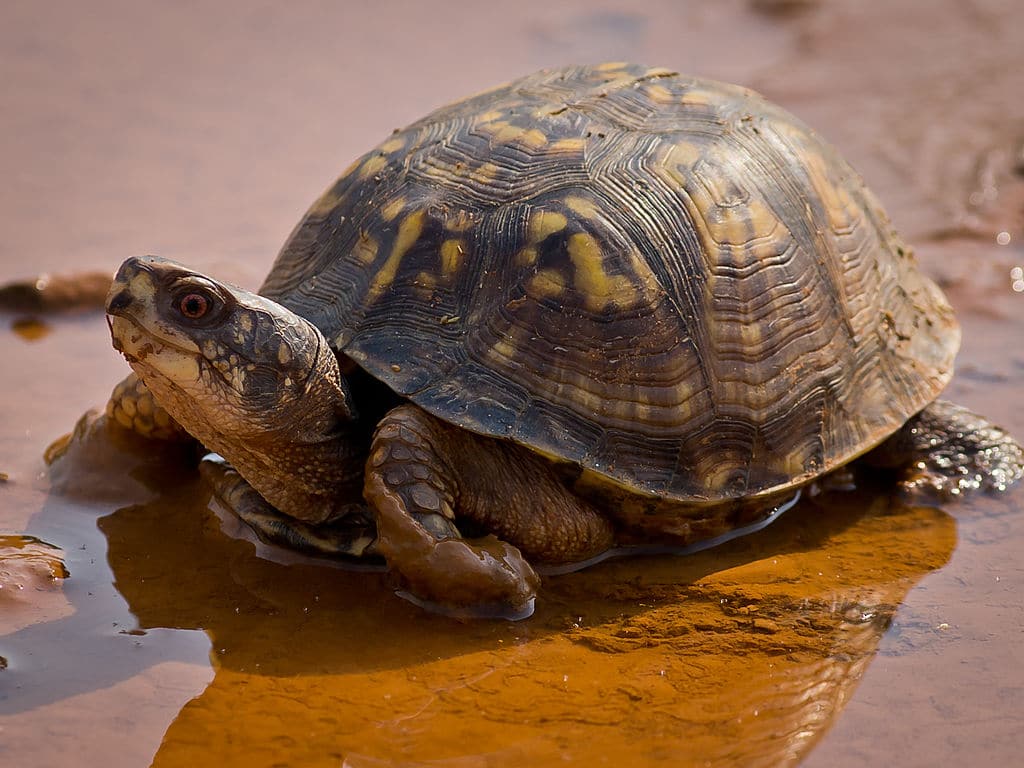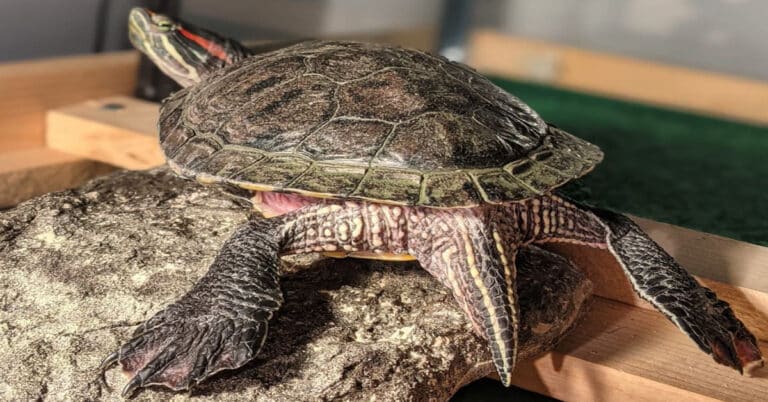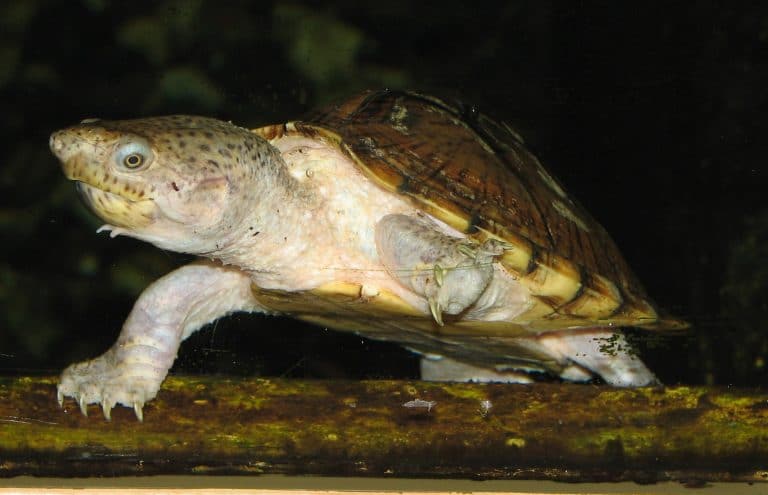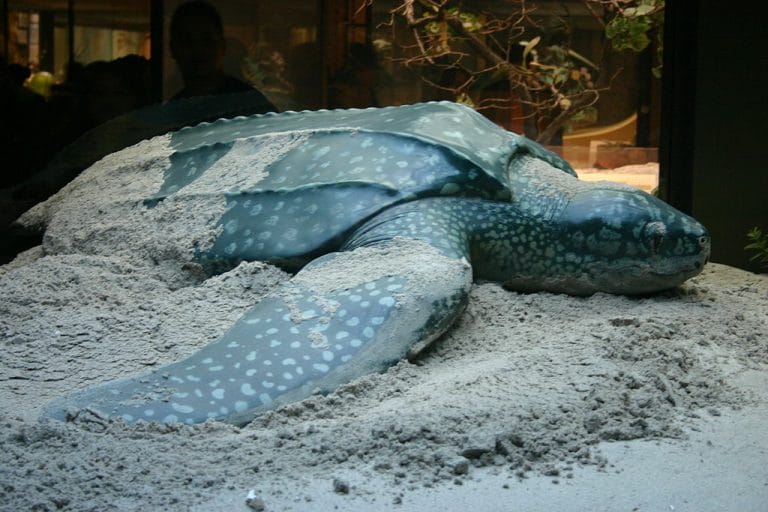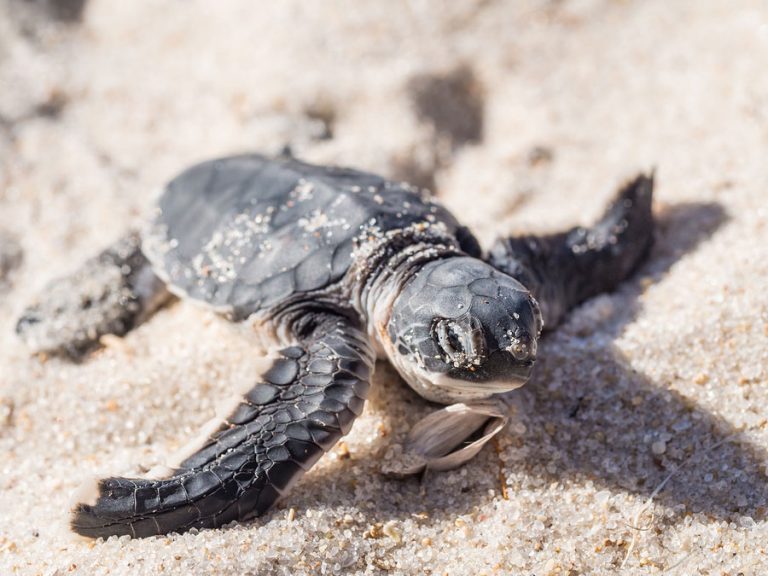Box Turtles
Scientific Classification
| Kingdom: | Animalia |
| Phylum: | Chordata |
| Subphylum: | Vertebrata |
| Class: | Reptilia |
| Order: | Testudines |
| Family: | Emydidae |
| Genus: | Terrapene |
| Type Species: | Terrapene carolina |
Box turtles are turtles of the genus Terrapene, living in North America (United States and Mexico). In addition, they also go by the name “box tortoise”, even though they are terrestrial associates of the American pond turtle family (Emydidae) and not associates of the tortoise family (Testudinidae). The 12 taxons in the genus spread among the four varieties. They are in a big sense a characteristic dome-shaped shell, hinged at the base, and assisting the turtle to draw itself tightly into the shell to escape from its predators. Even though keeping box turtles demands more effort, they have turned out as popular pets. Normally, the eyes of the males are orange or red in color, while the eyes of the females are brown to yellowish in color.

Box Turtle Life History
Box turtles are among the few species of turtles whose reproduction is slow and life span is the longest in the world. At first, when the box turtle emerges out of its egg, its length is 1.25inches. The juvenile turtles are very mysterious and difficult to find; hence there is not much information on the whereabouts of the juvenile box turtles. Rarely does one find a box turtle smaller than 3.5 or 4 inches in length. Probably, these young ones hide themselves in leaves litter or brush and mainly eat insects. The box turtles’ rate of growth is very slow, they attain sexual maturity at the age of 7 to 10, when they are as long as 5 and 6 inches. When the female box turtle reaches maturity, it lays clutches of 3 – 6 eggs in a shallow nest. They leave the eggs without any protection, on their own, to hatch. By the end of the summer or the beginning of fall the hatching takes place. Generally, box turtles attain 25 – 30 years or even up to 40 – 50 years.
Water
It is essential that you give a regular supply of water for the Box turtles. Facilitate them with some kind of pool which helps them to wade and immerse themselves in water, which they are very fond of. Their enclosure should stay clean by changing the water every day since they often defecate in the water. Box turtles seem like dull swimmers, but a lot of them find pleasure if you provide them with a deep pond in an outside enclosed space. They find it difficult to swim when they enter into old water. Most of the American box turtles appreciate ponds with warm water, and provide them with an exit which is convenient to enter with no risk of drowning. Place your Indoor Box turtles in water for soaking daily.
Distribution and Habitat

The elite North American box turtles, dwell in the United States on the east coast from Maine to Florida and to Texas, Oklahoma, Illinois, Michigan and eastern Kansas to the west. At times you can find these box turtles out of their geographical provinces on account of their popularity as house pets. Terrapene Carolina triunguis (three-toed box turtles) occupy the River Valley of Mississippi from across Southeastern Kansas, across Northern Missouri and from the coastal lowlands Southeastward across Tennessee and Georgia, east Oklahoma and to south central Texas.
Reproduction
Certain differences exist in the courtship of the subspecies. The courtship of the T.c. Major and T.c. Carolina split into 3 different phases: a biting, circling, shoving phase; copulation phase; and a preliminary phase. T.c. Bauri and T. c. Triunguis follow an ancestral method. The males in the species T.c. Bauri and T.c. Triunguis pulsate at their throats. The T.c.Triunguis performs this action by facing its female counterpart, whereas, the T.c.bauri use its its four feet to mount the female and pulsate. All the subspecies perform copulation in the similar manner, the male stands almost straight up and leans its concave shaped plastron on top of the carapace of the female.
Box Turtles as Pets
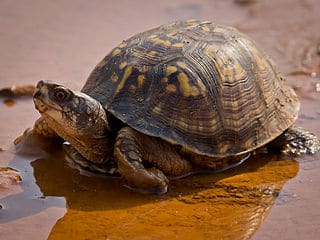
Basically, box turtles are small and of the land, hence they cover up their carapace wholly. These wonderful, little, independent animals need care from adults or conscientious kids, since they have multifaceted needs. As they are reptiles, they do not like compulsory hugging and interacting like kittens and puppies. However, if you wish to keep these fascinating and attractive scaly animals at home, at first study how well you can take care of them.
Purchase your turtle from a rescue group or reptile society. Either surf the internet to obtain one from your province or find out from the nearest university department of biology. Many people discard turtles and they need a good home. Make up your mind whether you like to bring up your turtle outside or inside. Both ways of bringing them up is beneficial. It is convenient to bring up your turtles indoors; a glass aquarium could hold them well as maintenance here is easier. If you prefer to rear them outdoors, construct a large wooden enclosure (or else purchase one). Taking care of them indoors is better because you are free of the fear of other predators, temperature and other elements that concern your pet. But turtles are basically of the wild, so outdoors will keep them contented.
Housing
Consider constructing an indoor enclosure and if you prefer a glass aquarium then a 40 gallon shallow tank is sufficient.
Substrate
Substrate is the material used at the base of the enclosure that provides humidity and comfort to your turtle. The substrate needed for your outdoor turtle is a combination of leaves and topsoil, ensuring that there is sufficient soil to hibernate as well as to hide.
Cleanliness
Maintain the enclosure of your turtle always clean. Be it outdoors or indoors, it is very essential that you keep the surroundings clean.
Accessories
Landscape the enclosure of your turtle. Construct an area suitable for it to play and have adventures, place pieces of logs for climbing, rocks for basking, a bowl of water for soaking and drinking and also flower pots for them to hide. Fill the empty space with edible plants such as common grass, mint, and cooking herbs such as chives or thyme.Feed them the box turtle food that they require. Juvenile turtles require food regularly but grownups need food thrice a week or more. Feed your turtles in the morning, with a combination of vegetables, fruits and proteins (adults require 10-20% of proteins and juveniles need 50 -70%). Wash and chop the feed; in addition, ensure that you supply them with a lot of vitamin A.
Following are some food that your turtle prefer to consume:
- Proteins: baby mice, crickets, canned dog food, sow bugs, slugs, earthworms, snails, grasshoppers, cicadas or wax worms.
- Fruits: strawberries, raspberries, apples, grapes, melons, tomatoes, figs, plums, pears, nectarines and mangoes.
- Vegetables: sweet potatoes, kale, carrots, squash, cabbage, mushrooms, spinach, bok Choy, park, Choi, dandelions and red leaf lettuce.
- Foods with Vitamin A: Give them dark leafy greens, whole mice, yellow vegetables; dust the food with calcium carbonate, gluconate, lactate or citrate (follow this every 2-4 weeks if your turtle is not getting the supply of Vitamin a with their food). If your turtle fusses over food, learn what to do. To arouse his or her liking for food, try to feed them with colorful red, orange or yellow food or alive animals. Prior to feeding, mist the enclosure with water and feed them when they are active, either late in the afternoon or early in the morning.
Hibernation
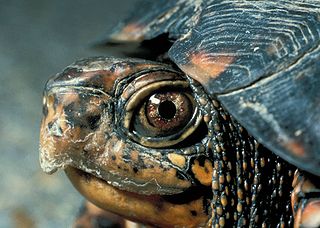
Get yourself ready for the time of their hibernation. Your Box turtle needs to hibernate, usually for 4-6 months when the weather is cold; it also depends on the place you reside, so in advance consult a vet who is well experienced with reptiles.

Having discovered a fondness for insects while pursuing her degree in Biology, Randi Jones was quite bugged to know that people usually dismissed these little creatures as “creepy-crawlies”.

